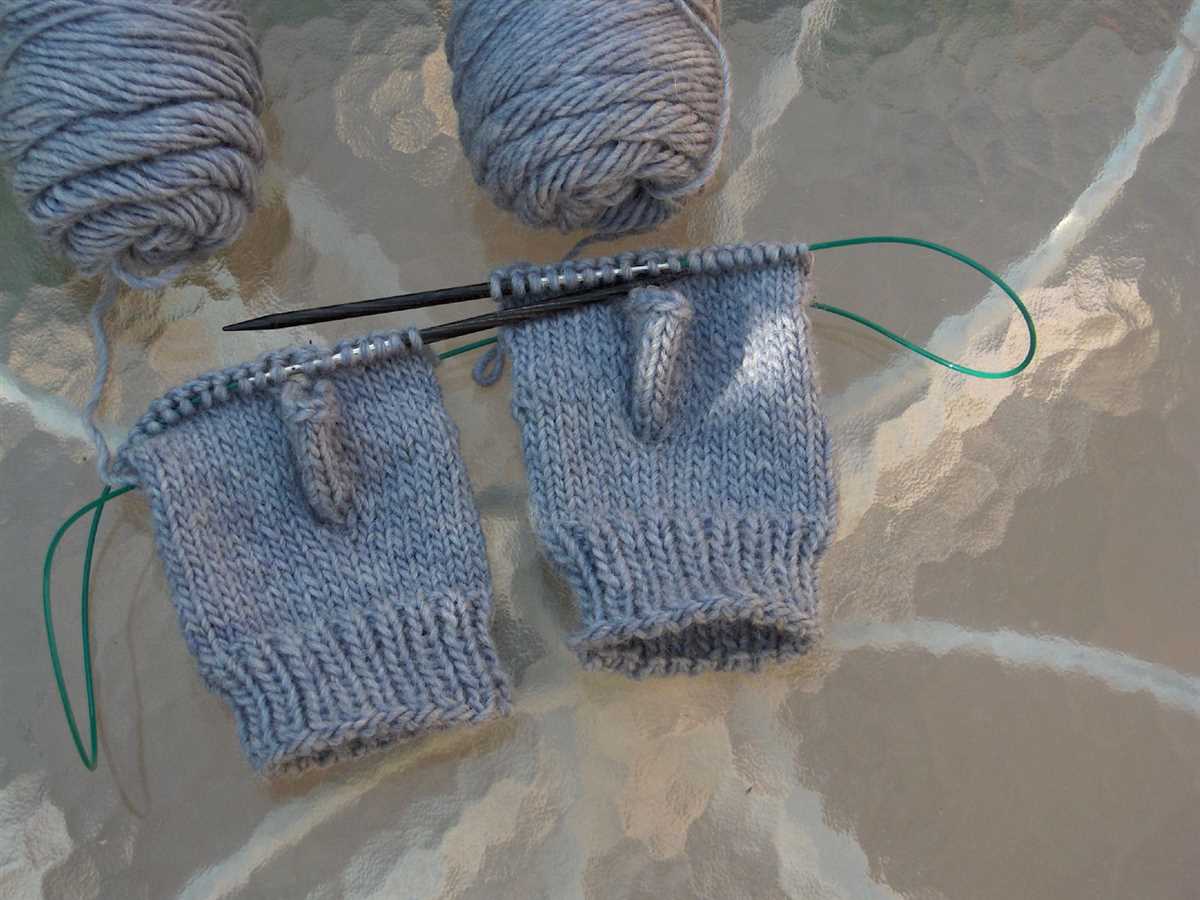
If you’ve never knit socks before, you might be surprised to learn that there are several different methods for knitting them. One popular method is called magic loop knitting, which allows you to knit small circumference projects like socks using just a long circular needle. This technique eliminates the need for double-pointed needles and makes sock knitting more accessible to knitters of all skill levels.
Whether you’re a beginner or an experienced knitter looking to try out magic loop sock knitting, there are plenty of free patterns available online. These patterns offer a wide range of designs, from simple basic socks to more intricate lace or cable patterns. With the right pattern and a little practice, you’ll be able to create cozy, comfortable socks for yourself or as gifts for loved ones.
With free magic loop sock knitting patterns, you can experiment with different stitch patterns, colorwork techniques, and yarns to create unique and personalized socks. You can also customize the fit by adjusting the length of the leg and foot or adding ribbing or other stretchy elements. Knitting socks can be addictive, and once you try magic loop sock knitting, you may never go back to using double-pointed needles again.
Why Choose Magic Loop Sock Knitting?
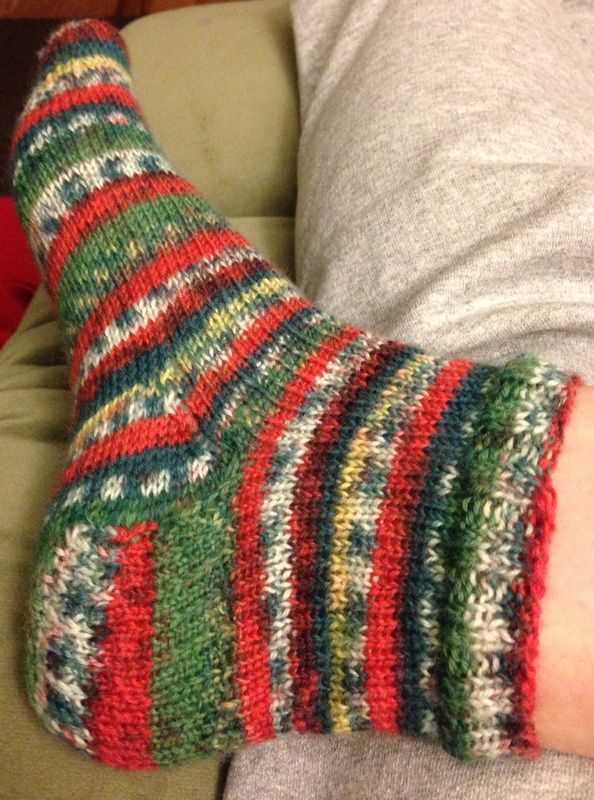
If you are a knitter who enjoys making socks, you may have heard about the magic loop technique. Magic loop sock knitting is a popular method that allows you to knit small circumference projects, like socks, using a long circular needle instead of double-pointed needles. This technique offers several advantages and is preferred by many knitters for various reasons.
Versatility: One of the main benefits of magic loop sock knitting is its versatility. With this technique, you can easily adjust the needle length to accommodate different sizes and lengths of socks. Whether you want to knit ankle socks or knee-highs, the magic loop method allows you to customize your project without the limitations of fixed needle sizes.
Portability: Knitting small circumference projects with double-pointed needles can be cumbersome, especially if you are on the go. Magic loop sock knitting eliminates the need for multiple needles and reduces the risk of losing them. With just one circular needle, you can easily carry your project in your bag and knit anytime, anywhere.
Reduced Laddering: Laddering is a common issue that can occur when knitting with double-pointed needles. The gaps between the needles can result in loose stitches and an uneven tension, causing ladders to form. Magic loop sock knitting helps minimize laddering because the stitches are distributed evenly on the circular needle, eliminating the gaps and ensuring a more consistent stitch appearance.
Increased Speed: Another advantage of magic loop sock knitting is the potential for increased speed. With only one needle to manipulate, you can knit more quickly and efficiently. The continuous circular motion allows for a smoother knitting experience, reducing the time spent rearranging needles and stitches.
Benefits of Magic Loop Sock Knitting
Knitting socks using the magic loop technique offers several benefits to knitters of all skill levels. This method allows for the creation of seamless socks using a long circular needle instead of traditional double-pointed needles. The following are some of the advantages of using the magic loop technique.
Versatility: Magic loop knitting is a versatile method that can be used to create socks of any size, from baby socks to adult sizes. With just one long circular needle, you can knit socks for yourself, your family, or even as gifts.
Efficiency: Knitting socks using the magic loop technique can save time and effort. Instead of juggling multiple double-pointed needles, you only need to work with one long circular needle. This makes it easier to keep track of your stitches and reduces the risk of dropped stitches.
Portability: Magic loop sock knitting is a great option for knitters on the go. With only one long circular needle, it’s easier to take your project with you wherever you go. Whether you’re on a long flight or waiting for an appointment, you can easily knit a few rounds of your sock project without worrying about losing or misplacing any needles.
Comfort: Using the magic loop technique can be more comfortable for some knitters compared to using double-pointed needles. With only one needle in each hand, there’s less strain on your wrists and fingers. This makes it a great option for knitters with arthritis or other hand and wrist conditions.
Seamless Results: One of the main advantages of magic loop sock knitting is that it allows for a seamless finished product. By continually shifting the stitches around the needle, you can avoid creating any noticeable seams in your socks. This creates a smooth and comfortable fit without any irritating seams.
Overall, magic loop sock knitting offers several benefits, including versatility, efficiency, portability, comfort, and seamless results. Whether you’re a beginner or an experienced knitter, this technique is worth exploring for your next sock project.
Essential Tools for Magic Loop Sock Knitting
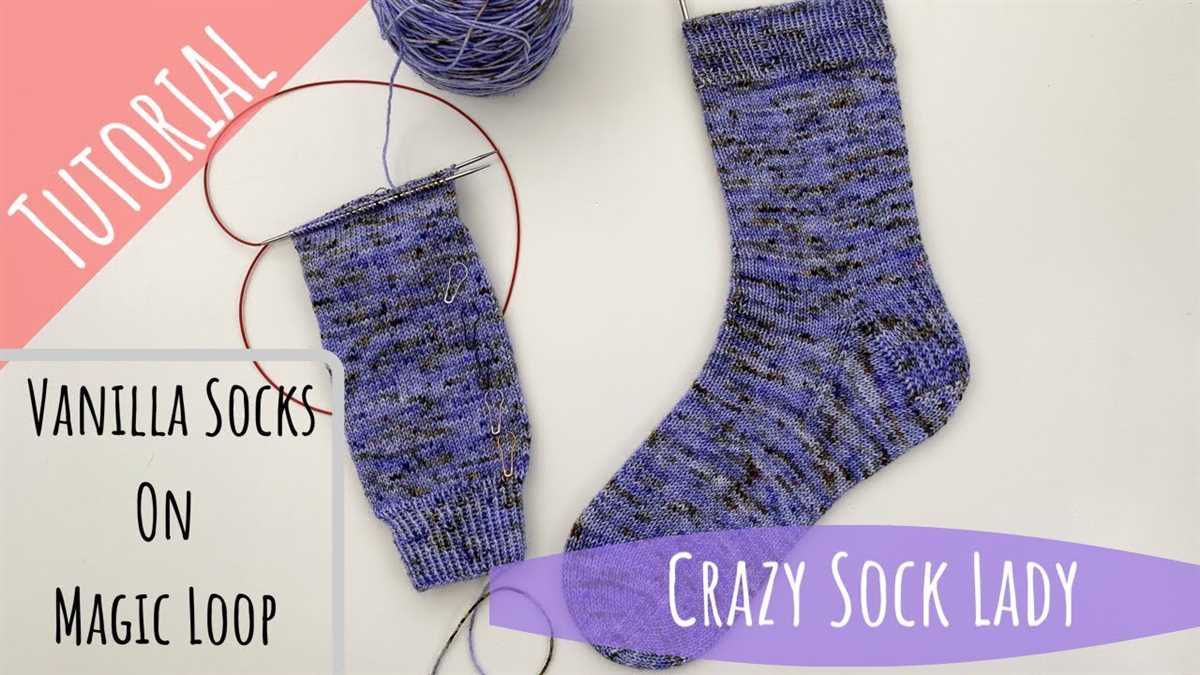
Magic loop sock knitting is a popular technique that allows you to knit small circumference projects, such as socks, using a long circular needle. To successfully knit socks using the magic loop method, there are a few essential tools you’ll need to have on hand.
1. Circular needle: The most important tool for magic loop sock knitting is a long circular needle, typically around 32 or 40 inches in length. This allows you to pull out a loop of cable and easily work on one side of the sock at a time. Make sure to choose a needle size that matches your yarn and gives you the desired gauge.
2. Stitch markers: Stitch markers are crucial for dividing the sock into sections and keeping track of the beginning of the round. You’ll need at least two stitch markers, one to mark the beginning of the round and another to mark the division between the front and back of the sock.
3. Yarn needle: A yarn needle, also known as a tapestry needle, is essential for weaving in loose ends and finishing your socks. You’ll use it to sew in any tails of yarn left from switching colors or joining a new skein.
4. Scissors: Having a good pair of scissors handy is important for cutting yarn and snipping any unwanted tails. Choose a pair that is small and sharp, making it easy to trim yarn neatly.
5. Measuring tape: While not directly related to the knitting process, a measuring tape is useful for checking gauge and ensuring your socks will fit properly. It’s important to measure both the length and circumference of your foot to ensure a good fit.
6. Stitch holder or scrap yarn: In case you need to put stitches on hold, it’s always helpful to have a stitch holder or a piece of scrap yarn available. This allows you to free up your needle and safely store your stitches until you’re ready to work on them again.
With these essential tools in hand, you’ll be well-equipped to tackle any magic loop sock knitting project. Happy knitting!
Free Magic Loop Sock Knitting Patterns for Beginners
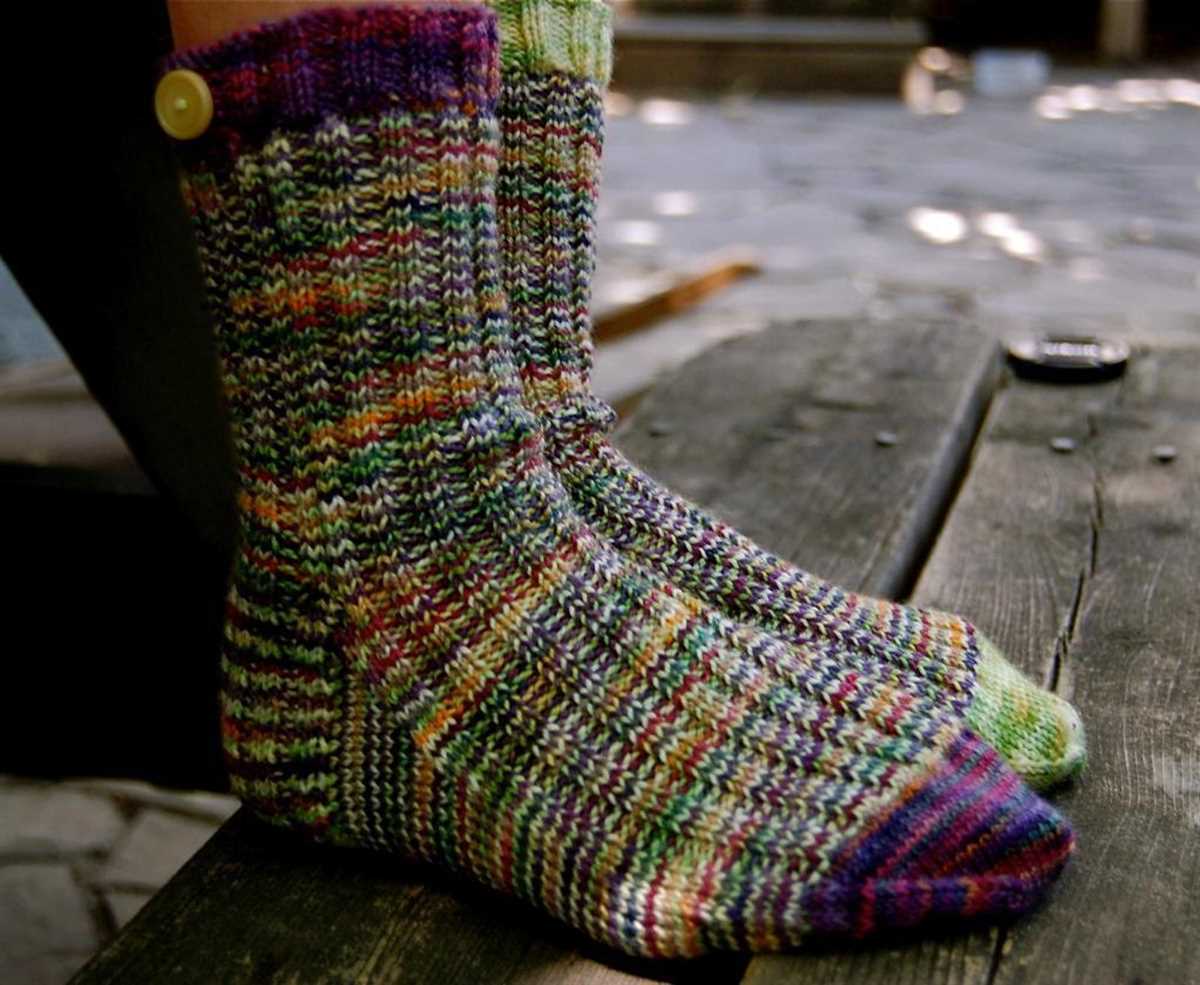
If you’re a beginner knitter looking for a new project, why not try knitting socks using the magic loop technique? Magic loop sock knitting allows you to knit socks in the round using just one long circular needle, eliminating the need for double-pointed needles. It may seem intimidating at first, but with a little practice and the right pattern, you’ll be able to create beautiful socks in no time.
One of the great things about magic loop sock knitting is that there are many free patterns available online to help you get started. These patterns are specifically designed for beginners and provide detailed instructions to guide you through the process. Whether you prefer ankle socks or knee-highs, you’re sure to find a pattern that suits your style.
When choosing a free magic loop sock knitting pattern, it’s important to consider your skill level and the techniques involved. Look for patterns that use basic stitches and simple construction methods, such as top-down or toe-up socks. This will make the learning process easier and help you build confidence in your knitting skills.
Additionally, pay attention to the materials and gauge requirements of the pattern. Make sure you have the recommended yarn and needle size to achieve the desired fit and finish. It’s also a good idea to read through the pattern thoroughly before starting, to ensure you understand all the instructions and techniques involved.
Here are a few free magic loop sock knitting patterns for beginners:
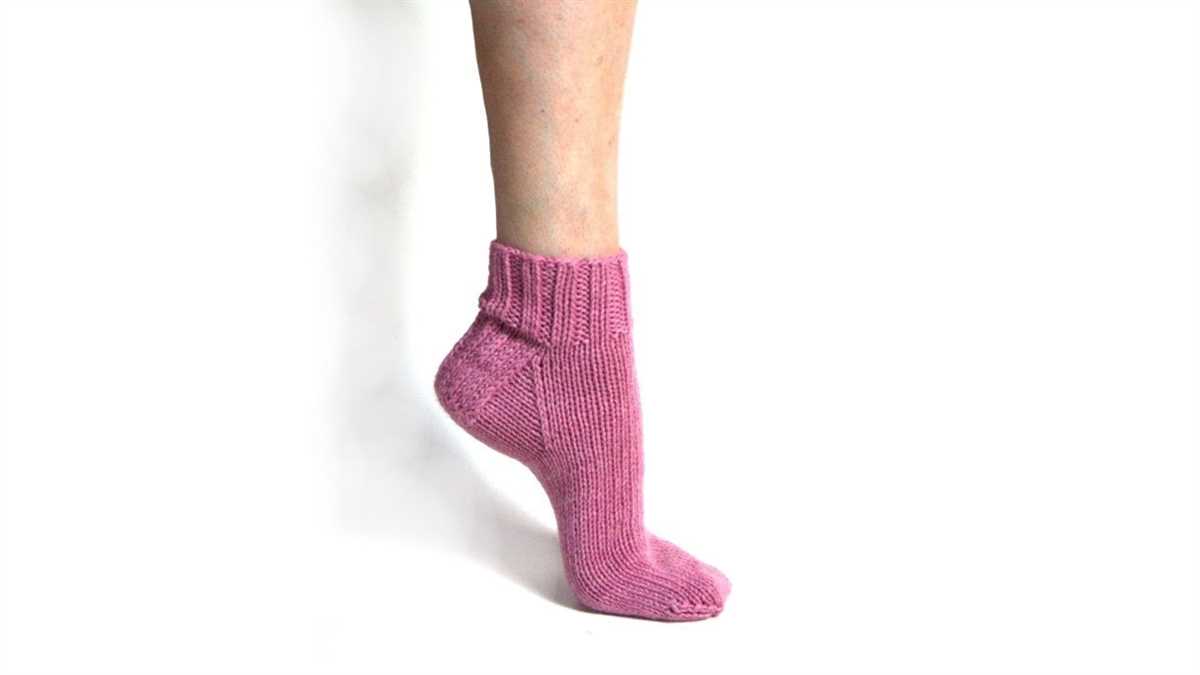
- Simple Ribbed Socks: This pattern is perfect for beginners who want to practice knitting rib stitches. With a basic ribbed cuff and a simple stockinette stitch body, these socks are a great introduction to magic loop sock knitting.
- Basic Toe-Up Socks: If you’re interested in learning the toe-up construction method, this pattern is for you. It guides you through the process of starting at the toe and working your way up to the cuff, using the magic loop technique.
- Lace Panel Socks: For those looking to add a touch of elegance to their socks, this pattern features a delicate lace panel design. The magic loop technique is used to create a seamless sock with an intricate lace pattern.
Remember, while magic loop sock knitting may take some practice, it’s a rewarding technique that will allow you to create beautiful, customized socks. Give it a try with one of these free patterns and soon you’ll be knitting socks like a pro!
Simple Ribbed Socks
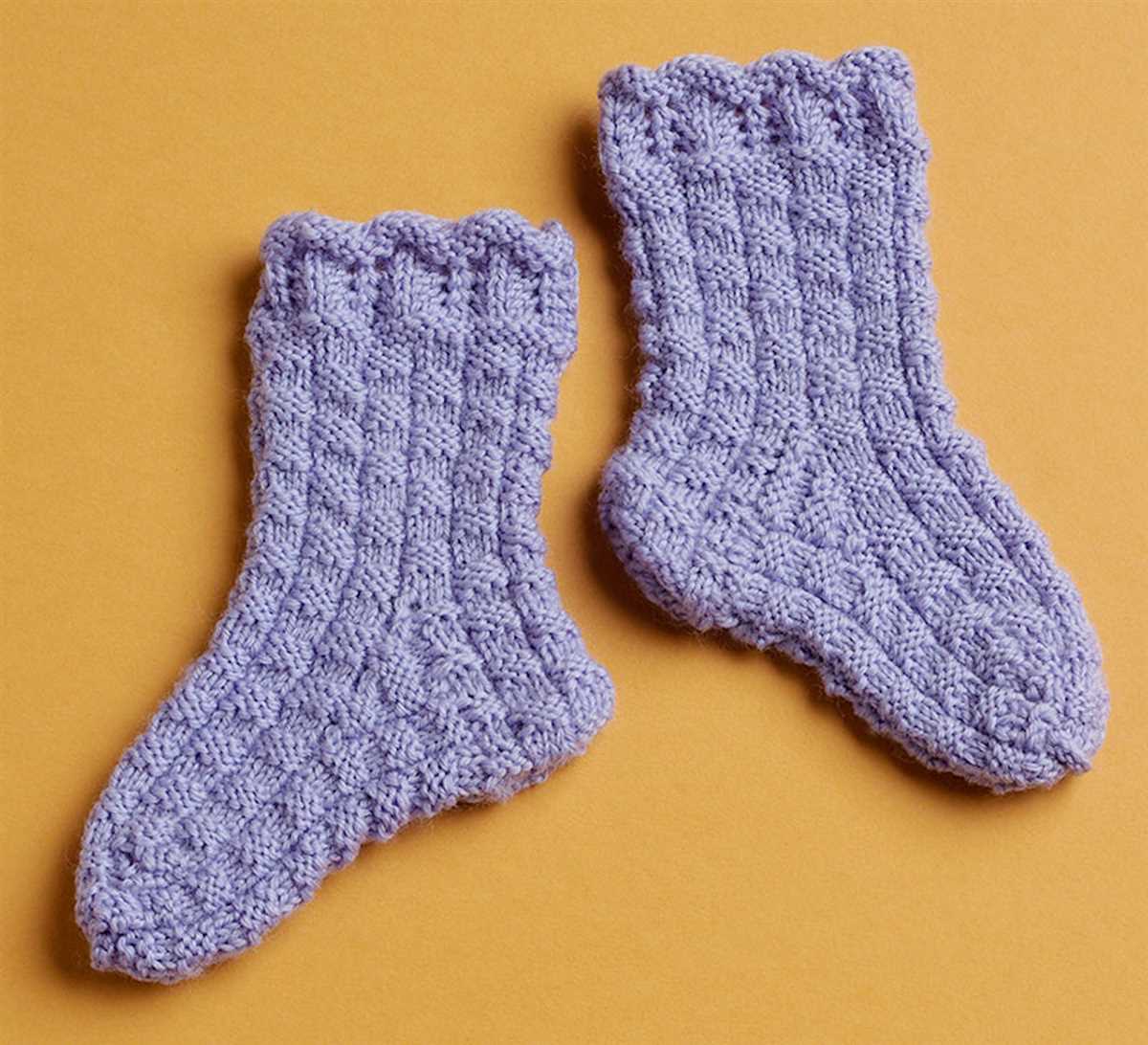
Ribbed socks are a classic choice for knitters who want a bit of texture and stretch in their socks. This simple ribbed sock pattern is perfect for beginners or those looking for a quick and easy project. The ribbed design creates a snug fit that will keep your feet warm and cozy.
Materials:
- Size 4 double-pointed knitting needles
- 200 yards of sock weight yarn
- Tapestry needle
- Stitch marker
Instructions:
- Cast on 64 stitches onto your double-pointed needles. Divide the stitches evenly between three needles, with 20 stitches on each needle and 12 stitches on the fourth needle.
- Join in the round, being careful not to twist your stitches, and place a stitch marker to mark the beginning of the round.
- Work *k2, p2* ribbing for the cuff of the sock for 2 inches.
- Continue in stockinette stitch (knit all stitches) until the sock measures 6 inches from the cuff.
- Begin the heel flap by working in a slip stitch pattern. Work 32 stitches in stockinette stitch, and then begin the heel turn.
- Work the heel turn by knitting until there are 7 stitches left on the needle. Then, turn the work and purl back until there are 7 stitches left on the other side.
- Continue working the heel turn, decreasing one stitch at the beginning and end of each row, until all stitches have been worked.
- Pick up stitches along the side of the heel flap and divide them evenly between two needles.
- Continue working in the round, decreasing every other round at the gussets until there are 64 stitches on your needles again.
- Work in stockinette stitch for the foot of the sock until the foot measures the desired length.
- Begin the toe decreases by decreasing one stitch at the beginning and end of each needle every other round, until there are 16 stitches on each needle.
- Follow a standard toe decrease pattern until there are 8 stitches remaining on each needle.
- Graft the stitches at the toe together using the Kitchener stitch.
- Weave in any loose ends and enjoy your new ribbed socks!
These simple ribbed socks are a great project for knitters of all levels. The ribbed design adds stretch and texture, ensuring a comfortable fit. Whether you’re a beginner or an experienced knitter, you’ll love knitting and wearing these cozy socks.
Basketweave Socks
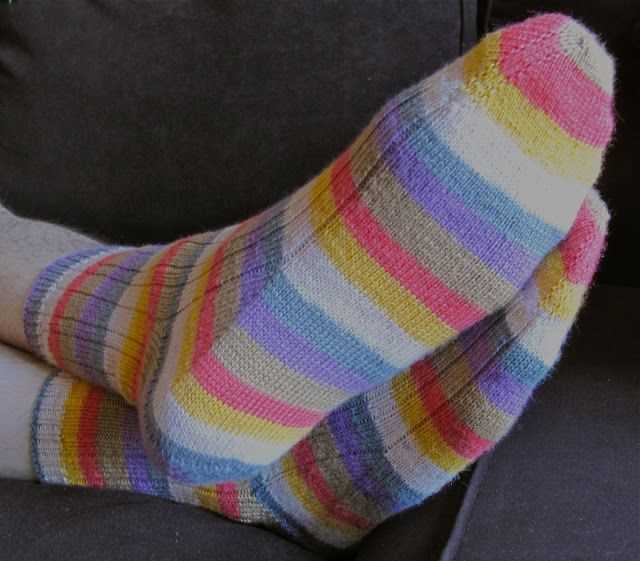
The basketweave stitch pattern is a classic and timeless design that adds texture and interest to any knitting project, including socks. With its alternating knit and purl stitches, the basketweave pattern creates a woven-like effect that resembles a traditional basket. Knitting socks in the basketweave stitch not only provides a unique look but also adds extra warmth and durability to the finished socks.
To knit basketweave socks, you will need to have a basic understanding of knitting techniques such as casting on, knitting, purling, and decreasing. You will also need to be familiar with working in the round using the magic loop technique. Once you have these skills, you can easily follow a free magic loop sock knitting pattern that incorporates the basketweave stitch.
Here is a basic pattern to get you started:
- Using your preferred method, cast on the desired number of stitches for your sock.
- Divide the stitches onto two needles for the magic loop technique.
- Begin the basketweave stitch pattern by knitting the first two rounds.
- Next, alternate between knitting and purling rows according to the basketweave stitch pattern for the desired length of the sock.
- Once you have reached your desired length, work the toe decreases to shape the sock.
- Complete the sock by weaving in any loose ends and blocking if desired.
The best part about knitting basketweave socks is that you can customize them to your preferences. You can choose different colors of yarn, adjust the stitch counts, or even combine the basketweave pattern with other stitch patterns for a truly unique pair of socks. Whether you’re a beginner or an experienced knitter, basketweave socks are a fun and rewarding project that will keep your feet warm and stylish.
Cable-Knit Socks
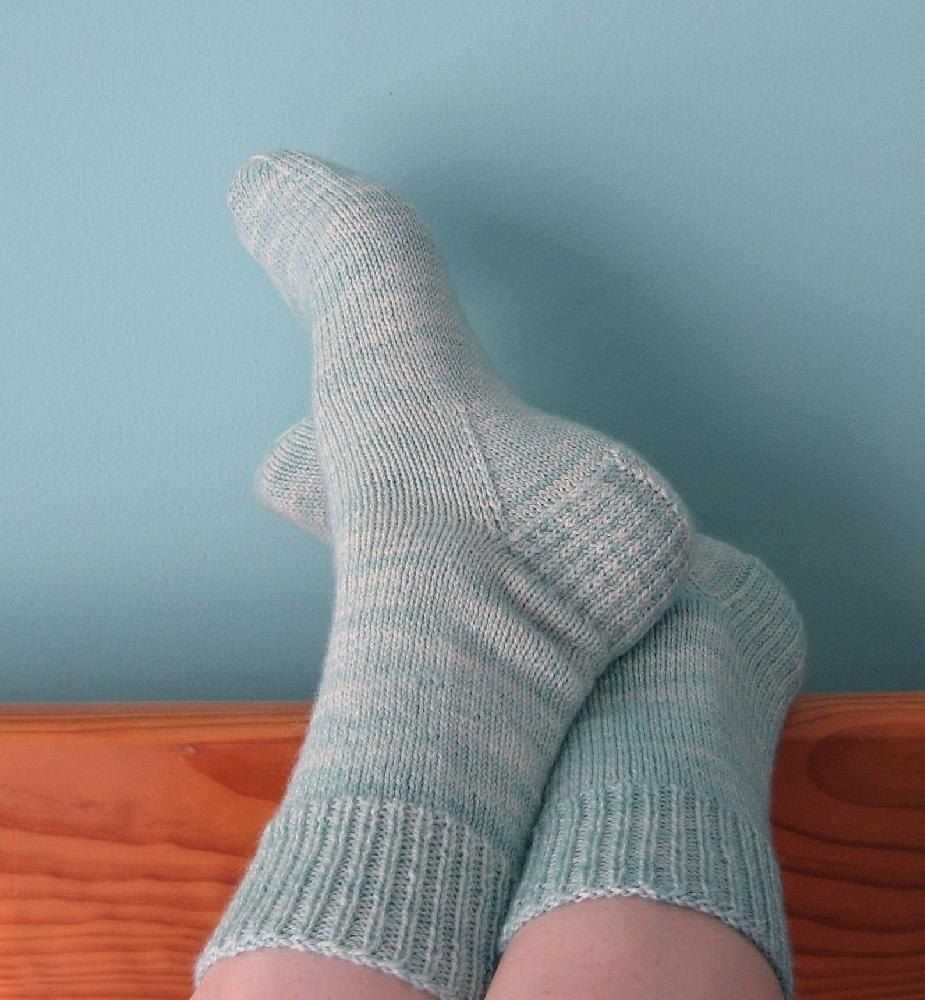
Cable-knit socks are a classic and stylish choice for those looking to add some texture and detail to their sock knitting projects. With their intricate cable patterns, these socks create a unique and eye-catching design that is sure to impress. Whether you’re a beginner or an experienced knitter, there are plenty of free magic loop sock knitting patterns available online to help you create your own cable-knit socks.
One of the great things about cable-knit socks is their versatility. They can be knit in a variety of different yarn weights and colors, allowing you to create socks that are perfect for any occasion. Whether you prefer a cozy pair of wool cable-knit socks for the winter or a lightweight cotton pair for the summer, the options are endless.
If you’re new to cable knitting, don’t worry! There are plenty of resources available to help you master the technique. Many free magic loop sock knitting patterns include step-by-step instructions and video tutorials to guide you through the process of creating cable-knit socks. With a little practice, you’ll be able to create beautiful and intricate cable patterns that will impress your friends and family.
Color-Block Socks
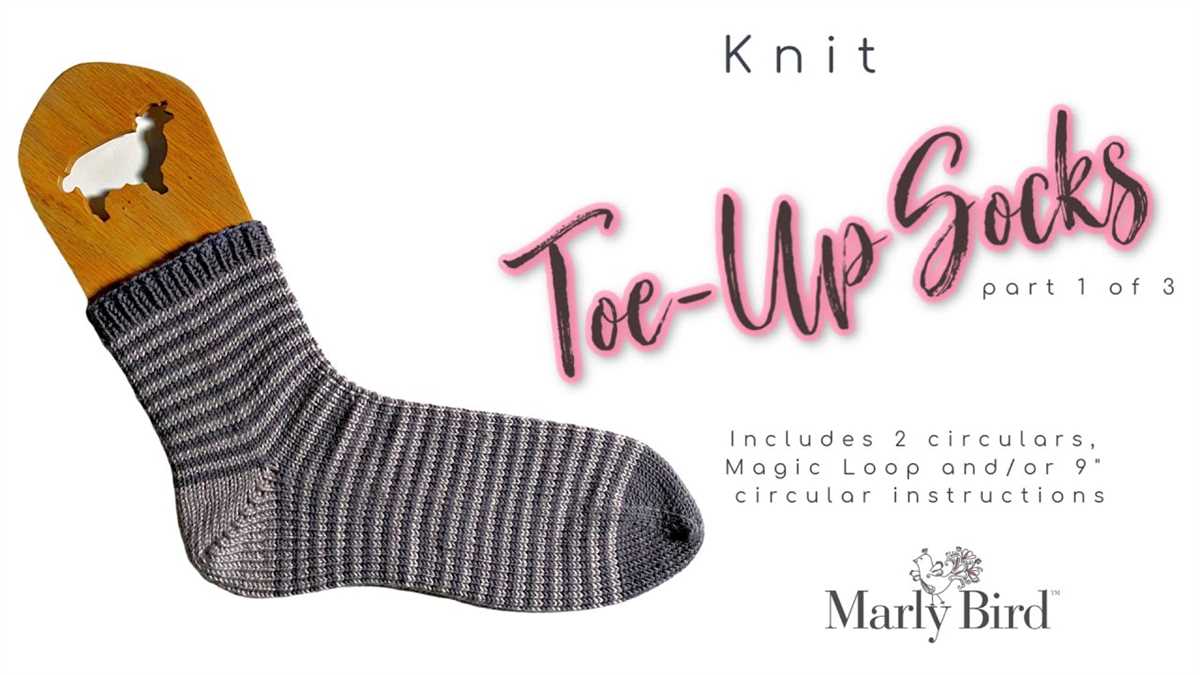
Color-block style is a popular design choice for many knitting projects, and it works especially well for socks. Color-blocking involves using contrasting colors to create bold and eye-catching patterns. When it comes to socks, color-blocking can add a fun and playful touch to your outfit, while also allowing you to experiment with different color combinations.
One of the advantages of color-block socks is that they are versatile and can be customized to suit your personal style. You can choose to use two or more colors for the color-blocking effect, depending on your preference. For a subtle look, you can opt for two similar shades within the same color family. On the other hand, if you want to make a statement, you can go for bold and contrasting colors that will really pop.
When knitting color-block socks, it’s important to consider the placement of the color blocks. You can choose to have the color blocks on the toe, heel, or cuff of the sock, or even incorporate them into a more intricate pattern throughout the entire sock. The possibilities are endless, and you can let your creativity run wild.
If you’re new to color-blocking or sock knitting, there are many free magic loop sock knitting patterns available online that can guide you through the process. These patterns provide step-by-step instructions and often include helpful tips and tricks to ensure your socks turn out beautifully. Whether you’re knitting socks for yourself or as a gift for someone else, color-block socks are a great way to add some excitement and personality to your knitting projects.
Free Magic Loop Sock Knitting Patterns for Intermediate Knitters
If you’re an intermediate knitter looking to expand your skills and try something new, why not give magic loop sock knitting a try? Magic loop knitting is a technique that allows you to knit small circumference projects, like socks, using a long circular needle instead of double-pointed needles. It’s a great way to eliminate the need for multiple needles and make the process more manageable.
There are plenty of free magic loop sock knitting patterns available online that cater to intermediate knitters. These patterns provide the perfect opportunity to challenge yourself and create beautiful, cozy socks that you can be proud of. Here are a few key tips to keep in mind as you embark on your magic loop sock knitting journey:
-
Choose the right needle size: It’s important to select the appropriate needle size for your sock project. This will ensure that your stitches are the correct size and that the finished socks fit comfortably.
-
Pay attention to gauge: Gauge is crucial when knitting socks, as it determines the final size and fit. Take the time to swatch and check your gauge before starting your project.
-
Practice the magic loop technique: Magic loop knitting may take some getting used to if you haven’t tried it before. Take the time to practice the technique on a small project before diving into your socks.
-
Follow the pattern instructions: Each pattern may have its own unique instructions, so be sure to read through and follow them carefully. This will ensure that you achieve the desired results.
With these tips in mind, you’re ready to explore the world of free magic loop sock knitting patterns. Whether you prefer simple, classic designs or more intricate, detailed patterns, there’s something out there for everyone. Don’t be afraid to challenge yourself and try new techniques – you may discover a whole new world of knitting possibilities!
Fair Isle Socks
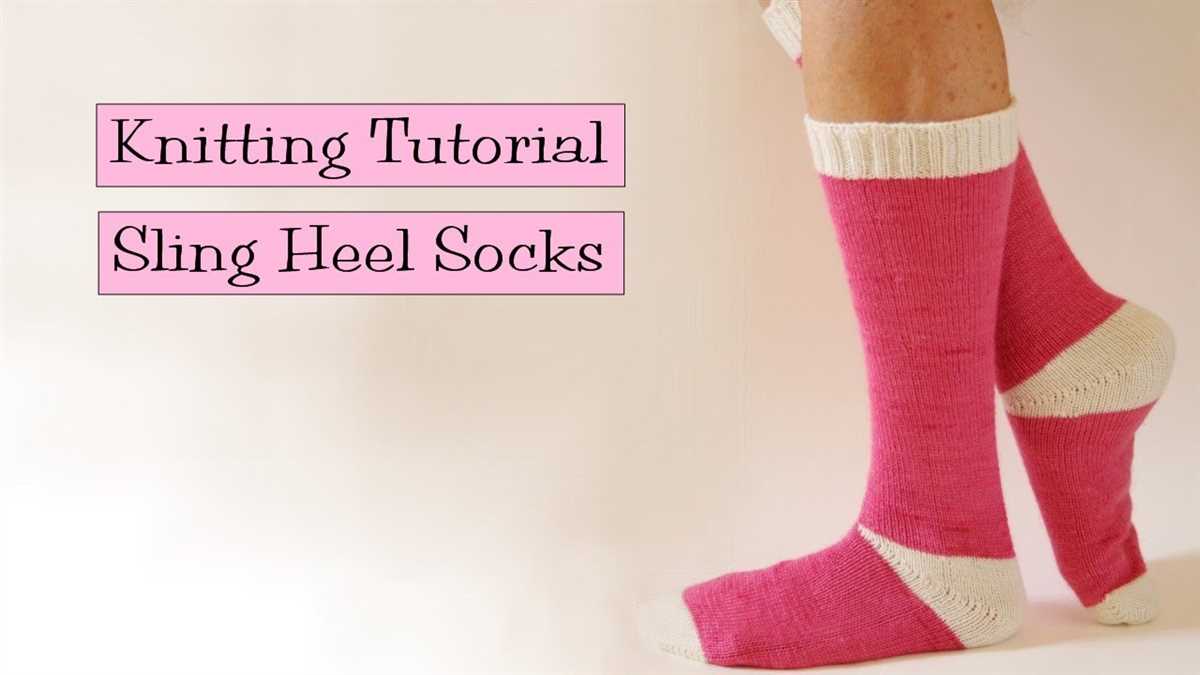
Fair Isle socks are a popular choice for knitters who want to add a touch of color and pattern to their sock projects. The Fair Isle technique, also known as stranded knitting, involves carrying two or more colors of yarn across the rows to create intricate and beautiful designs. These socks are perfect for showcasing colorwork patterns and can be customized to match any outfit or personal style.
When knitting Fair Isle socks, it’s important to choose a yarn that is suitable for stranded knitting. Yarns with a smooth texture and good stitch definition are ideal for showcasing the colorwork. Wool or wool-blend yarns are often recommended for their warmth and durability. Additionally, using a finer weight yarn, such as sock yarn, can help create a snug and comfortable fit.
To knit Fair Isle socks, you’ll need to be comfortable with basic sock construction, including the magic loop technique. There are many free patterns available online that provide instructions and charts for Fair Isle sock designs. These patterns range from simple geometric patterns to more intricate motifs inspired by traditional Fair Isle knitting.
When starting your Fair Isle sock project, it can be helpful to plan out your color choices and pattern placement. Some knitters like to create a color palette or swatch to ensure their chosen colors work well together. It’s also important to keep in mind that Fair Isle knitting can be slightly tighter than regular knitting, so you may need to adjust your tension or needle size to ensure a comfortable fit.
Once you have your materials and pattern ready, knitting Fair Isle socks can be a fun and rewarding project. The finished socks are not only cozy and warm but also showcase your knitting skills and creativity. Whether you’re new to colorwork knitting or an experienced Fair Isle enthusiast, there’s a Fair Isle sock pattern out there for everyone to enjoy.
Twisted Stitch Socks
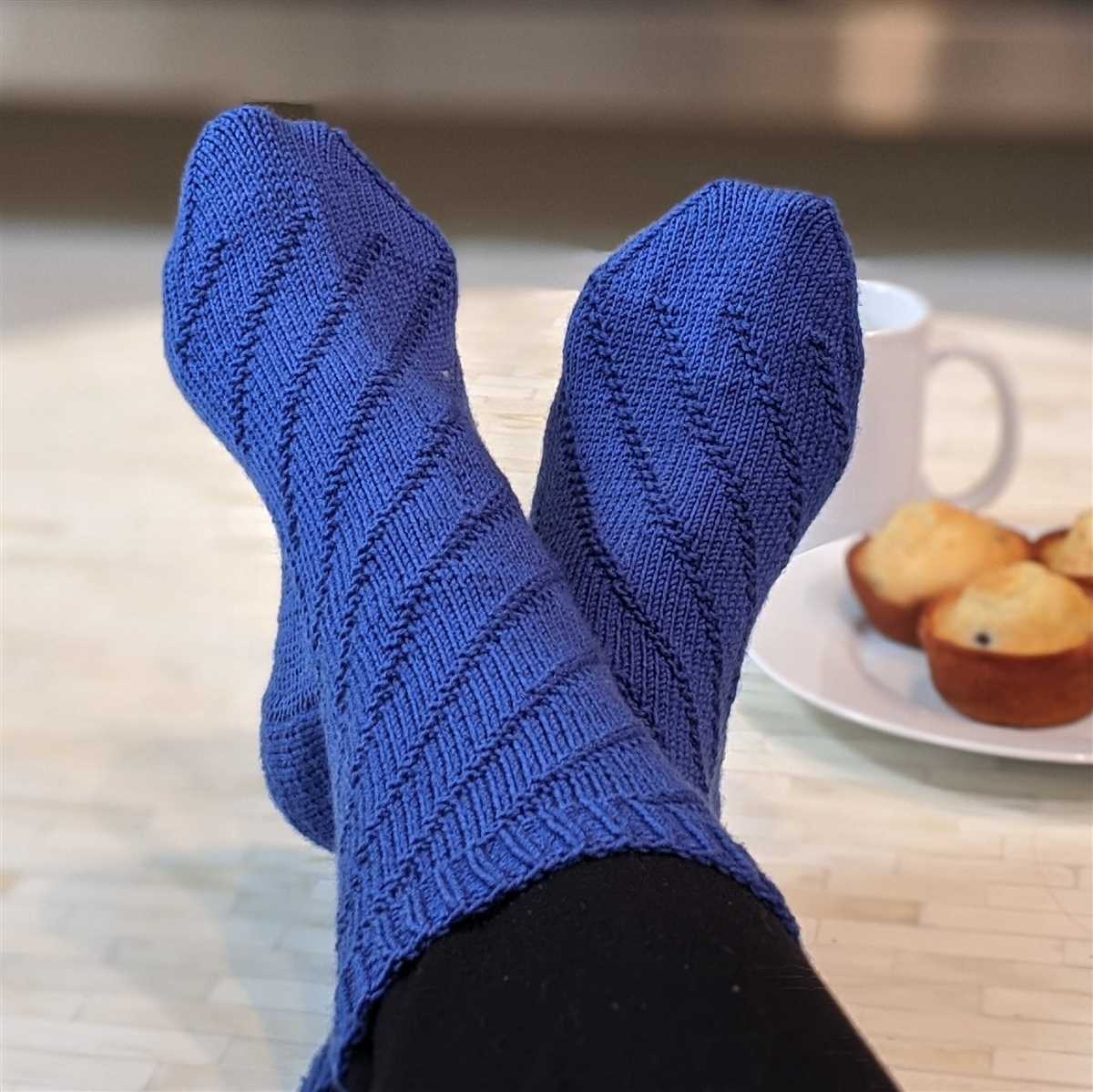
If you’re looking for a challenging and visually stunning knitting project, twisted stitch socks are a perfect choice. These socks feature intricate cable and twisted stitch patterns that create a beautiful texture and make them stand out from the crowd. Whether you’re an experienced knitter or looking to expand your skills, these socks will provide a rewarding and satisfying knitting experience.
To create twisted stitch socks, you’ll need to be familiar with cable knitting techniques. Cables are created by crossing stitches over each other, which gives the socks a three-dimensional look and adds depth to the design. Twisted stitch patterns are created by knitting through the back loop of a stitch, which creates a twisted effect and adds even more texture to the socks.
There are many free magic loop sock knitting patterns available online that feature twisted stitch designs. You can choose from a wide variety of patterns, including cables that run along the leg of the sock, intricate twisted stitch patterns that cover the entire sock, or a combination of both. These patterns often come with detailed instructions and charts to guide you through each step of the knitting process.
When knitting twisted stitch socks, it’s important to use a yarn that has good stitch definition. This will allow the cable and twisted stitch patterns to stand out and show off their intricate details. Sock weight or fingering weight yarns are commonly used for these projects, as they provide the perfect balance between fine stitches and durability.
Twisted stitch socks are not only beautiful, but they also offer warmth and comfort. The textured patterns help to create a thick and cozy fabric that will keep your feet toasty during the colder months. Plus, by knitting your own socks, you can customize the fit and choose the colors and yarns that you love, making each pair of twisted stitch socks truly unique.
Lace Pattern Socks
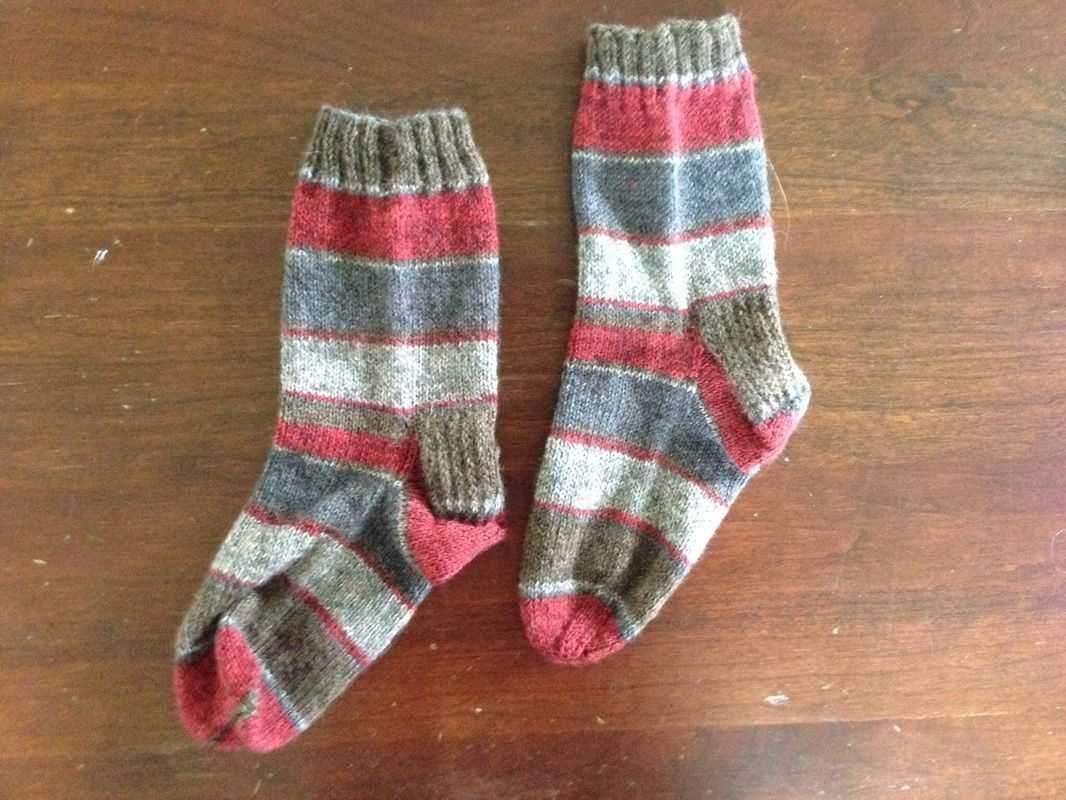
If you’re looking to add a touch of elegance and intricate detail to your sock knitting, lace pattern socks are the perfect choice. With their delicate lace motifs and openwork stitches, these socks are not only beautiful but also provide breathability and comfort to your feet.
One popular lace pattern used in sock knitting is the traditional feather and fan stitch. This stitch creates a wave-like pattern with alternating decrease and yarn over stitches, resulting in a stunning lace design. The feather and fan lace pattern is often worked on the leg and can be paired with a simple stockinette stitch for the foot of the sock.
Another lace pattern commonly used in sock knitting is the diamond lace stitch. This stitch creates a series of diamond shapes, formed by a combination of knits, purls, and yarn overs. The diamond lace stitch is often worked on the leg and can be combined with ribbing or a simple stockinette stitch for the foot of the sock.
For those who enjoy more intricate lace patterns, the leaf lace stitch is a beautiful option. This stitch creates a pattern that resembles leaves or petals, using a combination of knit and purl stitches. The leaf lace stitch is often worked on the leg and can be paired with a simple stockinette stitch for the foot of the sock.
When knitting lace pattern socks, it’s important to use a finer weight yarn and smaller needles to achieve the desired drape and stitch definition. Lace pattern socks are not only a joy to knit but also make for a stunning addition to your sock collection. Whether you’re knitting them for yourself or as a gift, lace pattern socks are sure to impress with their intricate beauty.
Textured Stitch Socks
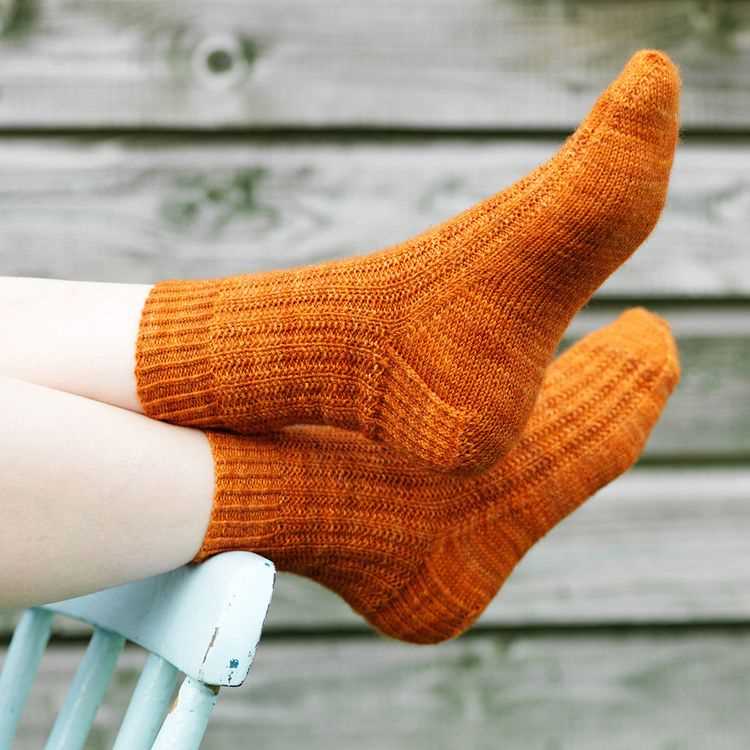
Textured stitch socks are a great way to add some visual interest and dimension to your knitting. These patterns often incorporate a combination of knit and purl stitches in different patterns and arrangements to create unique textures.
Some common textured stitch patterns include ribbing, cables, seed stitch, and basketweave. These stitches not only add visual appeal but also create a snug and stretchy fabric that hugs your feet. Whether you’re a beginner or an experienced knitter, there are plenty of free magic loop sock knitting patterns available that incorporate textured stitches.
One popular textured stitch sock pattern is the “Double Diamond Socks” pattern. This pattern features a diamond-shaped texture that is created using simple knit and purl stitches. These socks are not only stylish but also cozy and warm, making them perfect for colder months.
Another great option is the “Twisted Rib Socks” pattern, which combines twisted ribbing with stockinette stitch to create a visually interesting texture. The twisted stitches create a subtle twist effect that adds depth and dimension to the socks.
In conclusion, incorporating textured stitch patterns into your sock knitting can add a unique touch to your handmade socks. With the availability of free magic loop sock knitting patterns, you can easily find a pattern that suits your skill level and preferences. Whether you prefer a subtle textured design or something more intricate, there is a textured stitch sock pattern out there for you to explore and enjoy.